How to Write Compelling Property Listings That Attract Tenants: A Comprehensive Guide
Creating an engaging property listing is essential for attracting tenants and ensuring your rental properties stand out in a competitive market. A well-crafted listing can generate more inquiries, showings, and ultimately, leases. In this section, we’ll explore the fundamental aspects of writing property listings that not only capture attention but also highlight the value of the property.
Understand Your Audience and Property Type
Before you begin writing, take the time to understand the target demographic for your rental property. Are you offering a luxury apartment, a family-friendly townhouse, or a budget-friendly studio? The style of your listing should reflect the type of tenant you wish to attract. Understanding the needs and preferences of potential tenants will guide the tone, content, and features you highlight.
Target Demographics
- Young Professionals: If your property caters to young professionals, emphasize features like proximity to public transportation, local dining, nightlife, and modern, minimalistic design elements.
- Families: For family-oriented properties, highlight nearby schools, parks, and safe neighborhoods. Focus on space, community amenities, and child-friendly features.
- Students: When targeting students, emphasize proximity to universities, affordable rent, and transportation options. Security features and shared spaces may also be attractive.
Craft a Captivating Headline
Your property listing headline is your first impression. It’s the hook that grabs attention and encourages potential tenants to click and learn more. Craft a headline that’s not only informative but also appealing.
Include Key Features and Appeal
An ideal headline includes a clear description of the property’s main selling points. For example:
- Spacious 2-Bedroom Apartment with Pool Access Near Downtown
- Charming 3-Bedroom Family Home in Quiet Suburban Neighborhood
- Modern Studio Steps from Campus, Ideal for Students
These headlines are specific and focus on desirable aspects, like the number of bedrooms, proximity to key areas, and additional amenities like pools or pet-friendliness.
Keep It Short but Impactful
While it’s important to include key selling points, don’t overcomplicate the headline. Make sure it’s easy to read at a glance. The goal is to draw the reader in without overwhelming them with too much information.
Showcase Property Features with Descriptive Language
Now that you’ve captured attention with your headline, the next step is to keep the interest flowing by detailing the features of the property. Here’s where your writing skills really come into play.
Be Specific and Vivid
Instead of saying, “nice kitchen,” describe it as “a fully-equipped kitchen with stainless steel appliances, granite countertops, and plenty of storage.” Specific details create a clearer image in the tenant’s mind, making them more likely to see themselves living there.
Highlight the Best Aspects
Not every property has the same features, so it’s important to spotlight the things that make yours stand out. If your property has a large backyard, central air conditioning, or a walk-in closet, make sure to mention those key features. However, it’s crucial not to exaggerate. Being truthful about your property’s offerings helps build trust with potential tenants.
Use Active, Engaging Language
Keep your descriptions active and positive. Rather than stating, “The living room is spacious,” say, “Enjoy an open-concept living room, perfect for hosting gatherings or relaxing after a long day.” This puts the potential tenant into a lifestyle mindset, where they can picture how they’ll use the space.
Provide Clear and Accurate Photos
Photos are one of the most critical components of a property listing. In fact, properties with high-quality photos receive more interest than those without. Make sure to include images that capture the full potential of the space.
Quality Over Quantity
Aim for 8-10 high-quality photos, focusing on the key areas of the property: living room, kitchen, bedrooms, bathrooms, and any standout features like a backyard, balcony, or garage. Avoid clutter and ensure the space is well-lit and clean.
Show the Entire Space
While highlighting the best features is important, don’t neglect other parts of the property. Show potential tenants a clear layout by photographing the property from multiple angles. If the kitchen or bathroom is small, capture those areas in a way that emphasizes their functionality and charm.
Add Descriptive Captions
Each image should come with a brief description that highlights what’s in the photo. For example, instead of just “living room,” write “Spacious living room with hardwood floors, large windows, and an open floor plan.” This adds context and draws attention to desirable aspects.
Discuss the Neighborhood and Location
Your property is more than just a building—it’s part of a larger community. Most tenants care deeply about the location of the property, so it’s essential to describe the surrounding area and nearby amenities.
Proximity to Key Locations
Describe the property’s proximity to schools, public transport, grocery stores, shopping malls, restaurants, and parks. For example, “Located just 10 minutes from the train station, with easy access to downtown offices” gives potential tenants a sense of convenience.
Highlight Community Benefits
If the property is part of a gated community, mention the benefits of that. If there are nearby recreational spots or cultural landmarks, include those as well. A listing that presents the property as part of a desirable neighborhood will capture the interest of renters seeking a balanced lifestyle.
Mention Safety and Security Features
Tenants value safety, so make sure to mention any security measures the property offers. If your building has gated access, security cameras, or on-site staff, make sure to note these features. Highlighting a property’s security can make tenants feel more at ease and more likely to inquire about the space.
List the Rent Price and Lease Terms Clearly
Being transparent about pricing and lease terms is crucial to attracting the right tenants. Make sure to include the rental price upfront to avoid wasting time for both you and potential tenants.
Be Transparent About Rent and Fees
Include the monthly rent price, any additional costs (like utilities, maintenance, or parking fees), and any potential discounts or special offers. For example, “Rent is $1,500 per month, with utilities included” provides potential tenants with a clear understanding of what to expect.
Highlight Flexibility in Lease Terms
Some tenants may require flexible lease options, so mention whether you offer 6-month, 12-month, or month-to-month leases. If you allow pets or have restrictions, this information should be upfront as well.
By carefully considering these elements and addressing the most important aspects of a property listing, you can create a compelling narrative that resonates with tenants and stands out in a crowded market. The goal is to provide clarity, evoke emotion, and build a connection with potential renters.

Get a Free Rental Analysis
Want to know how much your home will rent for? We’ll send you a free rental report!
In the first section, we explored how to craft the foundation of an attractive property listing, focusing on understanding your audience, creating engaging headlines, describing property features, and emphasizing the importance of clear, high-quality photos. In this section, we will delve deeper into advanced strategies for making your listing more compelling, addressing common challenges faced by landlords, and providing actionable advice for overcoming those obstacles.
Leverage SEO Strategies to Increase Visibility
To make sure your listing reaches the right audience, it’s crucial to optimize it for search engines. A property listing that’s optimized for search engines is more likely to be seen by potential tenants searching online.
Use Relevant Keywords
When writing a property listing, think about the words or phrases that prospective tenants might use to find properties like yours. For example, if you’re renting a 2-bedroom apartment in a city center, phrases like “2-bedroom apartment for rent in [city],” “affordable apartments in [area],” and “pet-friendly apartments near [landmark]” can help your listing show up in search results.
Use these keywords naturally throughout the listing in your headline, property description, and neighborhood information. Avoid keyword stuffing, as search engines favor readability and user experience.
Write for People, Not Just Algorithms
While it’s essential to optimize your listing with relevant keywords, remember that the listing should still be written for people. Your audience is potential tenants, not search engine bots. Keep the tone conversational and informative while seamlessly integrating keywords.
Include Location-Specific Terms
When marketing rental properties, location matters. If your property is in a specific neighborhood, district, or near a popular landmark, include these terms in your listing. This will not only make the listing more appealing to prospective tenants but will also improve search visibility. For instance, using terms like “apartments near downtown” or “homes close to the beach” will increase your property’s visibility for those searching for properties in those areas.
Provide Virtual Tours or Videos
In today’s digital age, potential tenants often prefer to view a property remotely before scheduling an in-person tour. Offering a virtual tour or a well-edited video can be an excellent way to set your listing apart from others.
Create an Immersive Experience
A well-executed virtual tour provides a 360-degree view of the property, allowing potential tenants to experience it as though they are walking through it. This option is especially helpful for tenants who are relocating from another city or those with busy schedules who may not be able to attend an in-person tour immediately.
If a virtual tour isn’t possible, a high-quality video walkthrough is an excellent alternative. Showcase key areas, such as the living room, bedrooms, kitchen, and bathrooms. Talk about the features that make the space unique and inviting. Offering a video not only makes your listing stand out but also builds a sense of transparency, as it allows tenants to see every corner of the property before deciding to view it in person.
Use Social Proof and Tenant Testimonials
Adding testimonials or reviews from past tenants can provide valuable social proof, which can help build trust with potential renters. Social proof is the psychological phenomenon where people tend to trust the opinions of others over direct advertising.
Include Positive Tenant Experiences
If you’ve had previous tenants who were happy with the property, ask them for a brief testimonial. A statement such as, “The apartment was cozy, and the neighborhood was quiet and welcoming,” can be very persuasive.
Incorporating social proof helps humanize your property listing, as tenants get a sense of what it’s like to live in the space, not just what the property looks like. Positive reviews can also make the property seem more trustworthy, increasing your chances of attracting tenants.
Showcase Community and Local Reviews
In addition to tenant testimonials, consider mentioning positive reviews about the neighborhood. If the local schools, parks, or shops have garnered positive attention, include this in your listing. For example, “The neighborhood has been highly rated for its safety and proximity to top-rated schools.”
Address Common Tenant Pain Points
Anticipating the pain points of potential tenants and addressing them upfront can increase your chances of securing a lease. Think about the most common concerns tenants have when looking for a rental property, and directly address them in your listing.
Parking Availability
A lack of parking can be a dealbreaker for many tenants, especially those with vehicles. If parking is included or readily available, make sure to mention it. For example, “Off-street parking included,” or “Private garage space available.” If parking is limited, make sure to mention nearby parking alternatives.
Pet Policy
Many renters, particularly families and individuals with pets, will want to know if pets are allowed. Be clear about your pet policy—whether you allow cats, dogs, or both, and if there are any breed, size, or weight restrictions. If your property is pet-friendly, make sure to emphasize this feature, as pet-friendly listings are often in higher demand.
Maintenance and Upkeep
A well-maintained property is a key selling point for tenants. Address common maintenance concerns like pest control, lawn care, and emergency repair services. For instance, “24/7 emergency maintenance service available” or “Lawn care included in rent” can assure tenants that the property will be well taken care of.
Create Urgency with Call-to-Actions
Creating a sense of urgency in your property listing can prompt tenants to act quickly. This can be especially helpful in competitive rental markets. Clear, compelling calls to action (CTAs) encourage potential tenants to schedule a viewing or apply for the property before someone else does.
Example of Calls to Action
- “Call now to schedule a tour before this property is gone!”
- “Apply today and get a $100 move-in credit.”
- “Schedule your viewing now—available for immediate move-in!”
These types of statements create urgency and incentivize prospects to take the next step.
Limit the Listing Timeframe
If your property is in high demand, consider adding a sense of scarcity to your listing. For example, “Available for rent starting next month. Act fast!” or “Only one unit left—schedule a showing today!” This adds a sense of urgency and scarcity, which can push prospective tenants to act faster.
Make the Application Process Easy and Clear
One of the most important aspects of a property listing is ensuring the application process is easy to understand and navigate. If prospective tenants are interested in the property, they need to know what steps to take next.
Provide Clear Application Instructions
Be specific about how to apply for the property. Include links to online applications or instructions on how to contact you. If there are certain documents required, like proof of income or references, make sure to list these so tenants can come prepared.
Explain the Approval Process
Provide tenants with a clear understanding of how long the approval process takes. For example, “Applications will be reviewed within 48 hours, and tenants will be notified of their application status via email.” A transparent and straightforward process helps build trust and encourages tenants to follow through.

Overcoming Common Challenges in Writing Property Listings
Creating effective property listings is not without its challenges. However, with the right strategies, you can overcome these hurdles and create listings that consistently attract quality tenants. Below are some common challenges landlords face and how to address them.
Challenge 1: Limited Time or Resources for Marketing
For many landlords, especially those with multiple properties or a busy schedule, writing and marketing property listings can feel overwhelming. It may seem difficult to dedicate the time required to craft each listing perfectly.
Solution: Leverage Automation and Templates
To save time and ensure consistency across your listings, use templates for your property descriptions. Templates can help you structure your listings and ensure that you don’t miss out on important details.
Additionally, consider automating certain aspects of the marketing process. Many property management platforms allow you to automatically syndicate listings to multiple rental sites, saving you the time of manually posting each one.
Challenge 2: Standing Out in a Competitive Market
In a competitive rental market, it can be challenging to ensure that your property listing stands out among dozens of similar listings, especially in popular cities or high-demand areas.
Solution: Highlight Unique Selling Points and Create Stronger Listings
To stand out, focus on the unique features of your property. Whether it’s a spacious living area, a renovated kitchen, or access to local amenities, make sure to highlight the aspects that differentiate your property from others. If you’re competing with a large number of listings in a specific area, emphasizing benefits like a “quiet, family-friendly neighborhood” or “walkability to cafes and shops” could make your listing more appealing.
Additionally, use strong language in your descriptions to convey the property’s value. Instead of simply stating, “spacious bedroom,” try something like, “bright, airy bedroom with plenty of space for your personal touch.”
Challenge 3: Managing Tenant Expectations
Setting the right expectations from the start is critical. Tenants may come with unrealistic expectations regarding the rental property, whether it’s about pricing, amenities, or the move-in process.
Solution: Be Transparent and Clear
Clear communication from the outset can reduce misunderstandings. Be upfront about any property limitations or specific requirements. For example, if your property has a higher rent due to its location, mention the neighborhood’s key amenities, such as nearby public transportation, schools, or shopping centers. Similarly, if parking is not included or there’s a pet restriction, make sure to communicate this early in the listing to avoid wasting time.
Providing honest and detailed information will help you attract tenants who are better aligned with your expectations, reducing the likelihood of conflicts later on.
Advanced Tips for Optimizing Your Property Listings
Beyond the fundamental elements of writing property listings, there are several advanced strategies that can help you refine and optimize your approach for better results.
Use Analytics to Monitor Listing Performance
Many property listing platforms provide built-in analytics to track how your listings are performing. This can give you valuable insights into how many views your listing has received, where potential tenants are located, and which aspects of your listing are generating the most interest.
Solution: Analyze the Data to Refine Your Listings
Use this data to refine your listings. If you find that your listings aren’t getting as much traction as you’d like, consider tweaking the headline, adding more compelling photos, or adjusting the pricing. Analytics help you understand what’s working and what needs improvement, which can result in more successful listings in the future.
Test and Experiment with Different Listing Formats
Listing formats can vary, but you may find that some approaches work better than others depending on the property type and location. Experiment with different formats and tones to see what resonates with your target audience.
Solution: A/B Testing for Listings
If you’re unsure about which version of a listing will perform better, try A/B testing. This involves creating two versions of your listing, each with slightly different wording or images, and monitoring which one receives more engagement. This allows you to make data-driven decisions about what elements in your listing work best.
Utilize Paid Advertising and Social Media
While free property listing sites are a great starting point, leveraging paid advertising can give your listings a significant boost. Paid search ads, social media campaigns, or even influencer marketing in local housing markets can help increase visibility.
Solution: Use Social Media to Promote Listings
Social media platforms like Facebook, Instagram, and Twitter offer targeted advertising options that allow you to reach specific demographics, such as individuals searching for rental properties in your area. Additionally, posts on social media can be shared easily, increasing the chances of your property being seen by a broader audience.
Consider using Instagram for visual storytelling, sharing photos and videos of the property and its surroundings. Facebook Marketplace is another effective tool for listing rental properties, as it allows for quick communication with potential tenants.
The Importance of Ongoing Property Listing Maintenance
Your property listing doesn’t end when it’s posted. To ensure you continue to attract tenants, it’s essential to regularly update and maintain your listing.
Keep the Listing Current
As the property changes (e.g., new appliances, updated décor, or improved amenities), make sure to update the listing to reflect these changes. An outdated listing with incorrect details can lead to confusion and frustration among prospective tenants.
Update Photos and Videos
If your property has undergone renovations or if the seasons change (i.e., the winter photos no longer reflect the property’s appeal), update the photos accordingly. Fresh visuals give your listing a sense of vitality and can spark more interest from potential tenants.
Ensuring Long-Term Success with Effective Property Listings
Writing compelling property listings that attract tenants is both an art and a science. By focusing on what tenants care about most—convenience, transparency, and value—you can create listings that not only capture their attention but also convert them into applicants.
By implementing the strategies outlined in this guide—whether it’s leveraging SEO, enhancing your visuals, addressing pain points, or optimizing your marketing—you can ensure that your property listings consistently stand out and attract high-quality tenants.
Remember, successful property listings are not just about showcasing the space but also about telling a story. Make sure your listing paints a picture of what it’s like to live in the property and in the surrounding community. With the right approach, your property will be the one tenants are eager to call home.
Suggested Relevant Links:
Move in Checklist For Residents
How Strategic Marketing Can Reduce Vacancies in Jupiter Rentals
Navigating Eviction Procedures in Jupiter, FL
How to Increase Tenant Retention in Palm Beach Gardens
How to Optimize Property Listings for Maximum Exposure in Palm Beach County
Frequently Asked Questions (FAQ) about Writing Compelling Property Listings
1. What are the key elements of a compelling property listing?
Key elements include:
- Detailed Property Description: Highlight features like size, amenities, and unique qualities.
- High-Quality Photos and Videos: Showcase the property visually.
- Clear Pricing: Include rent, security deposit, and extra costs.
- Neighborhood Information: Mention nearby amenities and transportation options.
- SEO Optimization: Use relevant keywords for better visibility.
- Call to Action: Encourage potential tenants to reach out.
2. How can I make my property listing stand out in a competitive market?
- Focus on unique features (e.g., renovated spaces).
- Use engaging language that appeals to emotions.
- Offer virtual tours or high-quality images.
- Highlight the neighborhood’s key attractions.
3. What role do high-quality images play in attracting tenants?
High-quality images provide a clear, attractive view of the property, helping potential tenants visualize living there. Professional photos set the right tone and make the listing more appealing.
4. How can I avoid overselling my property?
Be honest and transparent. Focus on the property’s real strengths and avoid exaggerating features. Clear descriptions will attract tenants who align with the property’s actual value.
5. Is it necessary to include neighborhood details?
Yes, many tenants prioritize location. Mention nearby amenities like schools, shops, parks, and transportation options to make the property more attractive.
6. How important is SEO in property listings?
SEO helps your listing show up in search results. Use relevant keywords (e.g., “affordable apartments in [city]”) to improve visibility and attract more tenants.
7. What should I do if my listing isn’t getting enough attention?
- Update photos and descriptions.
- Adjust the rent if necessary.
- Experiment with different platforms or run targeted ads.
8. How often should I update my listing?
Update your listing regularly to reflect changes in the property or market. Fresh photos and details can help maintain interest.
9. What are the best platforms for property listings?
- Zillow
- Craigslist
- Rent.com
- Facebook Marketplace
- Apartment Finder
10. Can I reuse the same listing across multiple platforms?
Yes, but tailor it to each platform’s format. Ensure consistency, but adjust the listing for the best presentation on each site.



